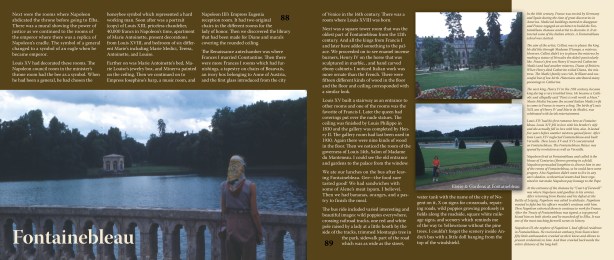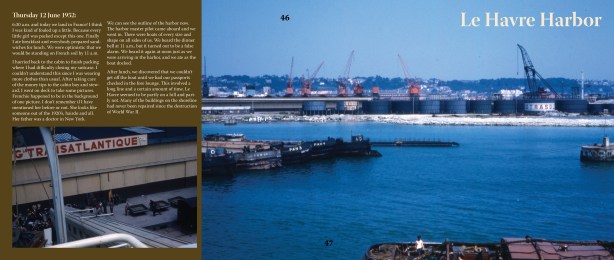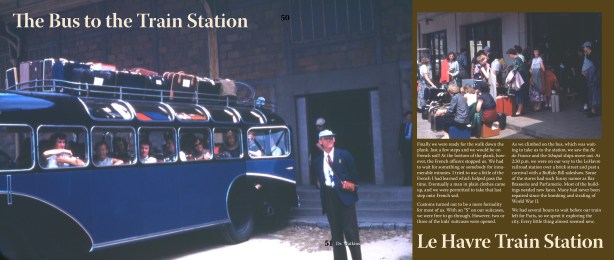Friday August 22, 1952:
In the morning our hotel included a big breakfast. Afterwards I dashed down the street to see about tickets with L.O. and just barely made it back in time for our tour. I left Betty feeling low.
Our guide told us that there were definite class distinctions with many British born snobs. First on the agenda was Oxford. It was a pretty town and the university had 27 schools or colleges with buildings scattered all over town. I took pictures at Christ’s Church College, one of the largest constituent colleges of the University of Oxford. John Wesley (1636–1678) was an English nonconformist minister who was a student at Oxford.
Next was the Trinity College which was another college at Oxford and I snapped some pictures of it. I viewed the first work of Christopher Wren. He studied at Oxford and was one of the most highly acclaimed English architects in history. Soon after we saw the Bedouin Library with broken bottles on the walls. Each student bedroom had a sitting room.
As we left Oxford we drove by Blenheim Palace, the home of Sir Winston Churchill. It was in a small town, Woodstock, that was eight miles northwest of Oxford in Oxfordshire, England. The palace was 2700 acres and walled. I noticed a vegetable garden between the wall and road with scarecrows and unusual haystacks.
Later we stopped for pictures of the countryside in Warwickshire. We also discovered thatched roofs which had lasted over 400 years and one church that had shrubs in the shape of bottles. Back on the road I caught sight of flax fields and a waterfall that was a miniature Niagara.
We learned one of the earliest discoveries of England was by Pytheas of Massalia, who was a Greek geographer and explorer from the Greek colony around 300 B.C. During this time the Celts, which had inhabited most of Western Europe, arrived in England. The Celts were fair haired and wore bright colored clothes with brilliant colored necklaces. Also, Druidism, a religion, was practiced by offering human sacrifices at this time.
In the middle of the 2nd century Rome conquered the Celts and built big walls to keep the Picts and other enemies out of England. In the 5th century Roman’s military withdrew and left Britain open to invasion primarily by the Angles, Saxons, Jutes, and Hoards who initially settled in the eastern part of the country. The Hoards wiped out Christianity, but it was reestablished in the 6th century by Augustine, a Roman philosopher and theologian. In the 580 A.D. King Ethelburt was the first English king to convert to Christianity.
During 871-899 A.D. Alfred the Great was noted for his defence of the Anglo-Saxon kingdoms of southern England against the Vikings. Danelaw was used to define the treaties, boundaries, and kingdoms between the English king, Alfred the Great, and the Danish warlord, Guthrum. Then from 1042-1066 Edward the Confessor was one of the last Anglo-Saxon kings of England that helped to restore order. He was the founder of Westminster Abbey which was later demolished in 1245 A.D. to make way for Henry III’s new building, which still stands today.
Before his death in 1066 A.D. Edward the Confessor mishandled the succession issue of whether William the Conqueror or Harold II of England would ascend to the English throne after his death. Harold II ended up taking the throne, but Edward’s dangerously indecisive actions contributed to the eventual Norman conquest of England by William the Conquerer at the Battle of Hastings.
During William the Conqueror’s reign he built the Tower of London with the Gothic arch which had been started in Northern France. At this time Charlemagne reigned and united much of Western and Central Europe. In the 14th century Joan of Arc, a peasant, heroine of France and a Catholic saint, was burned at the stake by the British in Rouen, France. She paved the way for the coronation of Charles VII through her divine guidance in many important victories in the Hundreds’ Year War. Charles VII crowned at Reims, France helped remove the English elite and replaced them with a new French-speaking aristocracy. And their speech had a profound and permanent effect on the English language.
Soon we arrived at the 14th century Warwick Castle with a moat and drawbridge. There was a picture of Warwick on the grounds and in the chapel of the castle there was a blind guide who was a war veteran. The oldest piece of painted glass in the window near the rear of the castle. Then I saw a Virgin Mary painting by Perugino, an Italian painting of 14 bishops, and a portrait of Lord Warwick’s family in the hall.
There were portraits of the Earl’s great great grandson, Lord Brooke by Morrison, and of the coronation of Queen Victoria in 1837, who reigned the United Kingdom of Great Britain and Ireland. In the dining room there was a portrait of Charles I by Van Dyke at other end of the great hall. I glimpsed swords, armor, tapestries, a long table, Italian carpet, chairs, Oliver Cromwell’s helmet and carvings and a painting by Rubens. The last royalty to use these rooms was the Countess of Warwick.
As we continued through the Warwick castle, I identified a portrait of Frances Evelyn, an Italian marriage chest, an English bottom drawer, an American hope chest, a cedar drawing room, and an Italian decoration. There were Van Dyke paintings with the middle painting taller than the others. I learned that Robert Rich had been Earl of Warwick in 1918. The green room was the music room and there were Rubens portraits and paintings of Princess Margaret, Lady Brook, Richard Dumbleby, a Spanish warrior, and Earl of Stratford.
Our tour progressed to Queen Anne’s bedroom with paintings of her over the mantle piece and bed. There was a replica of the crown at the head of the bed. She weighed 14 stones or 308 lbs. and had 17 children, who all died before her death. Next was the balcony and a painting by Hobey of Henry VIII at age 45 hanging over a fireplace. I noticed a little clock which had belonged to Marie Antoinette and a bronze. There was a little round painting located through the wall and down some stairs.
Then on to Stratford-upon-Avon where Anne Hatheway, 26, and Shakespeare, 18, got married. It was the third birthplace we have visited of some of the greatest writers. Previously on the trip we saw the birthplaces of Goethe and Dante. Along with Shakespeare’s living room, there was a museum in what used to be his father’s workshop. This was where Shakespeare’s printed works, early quartos, and folios were put together.
With a Holy Trinity Church nearby, an old ferry traveled across the River Avon. There was a U.S. Army Field Band giving a concert in front of a new theater.
Next on the tour we saw the Memorial Park and extra iron ore sitting in the middle of the field. There was a spot for tea and cakes where we found another bus load of kids. We had punch and banbury cross buns. We all sang, the bus load of kids sang, we sang, they sang, we sang. They clapped and we clapped. It was so much fun! I spotted a new kind of car which was a one seater. What a great day!
From 1154-1189 A.D. Henry II, who was born in France, brought reformation as he ruled as King of England. At various times, he controlled parts of Wales, Scotland and western France. Richard the Lion, the next English king, had a great reputation as a great military leader and warrior. In 1191 A.D. he took 8,000 of his men to Palestine to help a family friend to try and retain the kingship of Jerusalem. Then around 1649-1660 A.D. there were six Stuart monarchs who ruled both England and Scotland as well as Ireland.
In 1215 the Magna Carta was the first document that was forced upon a English king by a group of his subjects, the feudal barons. It was an attempt to limit his powers by law and protect their privileges. In total fifteen Plantagenet monarchs, including those belonging to cadet branches, ruled England from 1154 until 1485. It was a royal house that originated in France. King Edward I of England, who ruled from 1272-1307, gave his son Prince Edward, later King Edward III, the title Prince of Wales. Wales was subsequently annexed by England under the Laws in Wales Acts in the 1500’s. Then King Henry VIII ruled from 1509-1545 A.D. During this time Martin Luther challenged the Catholic Church and helped provide an atmosphere for the Church of England to flourish. Also, from 1523-1534 A.D. a Medici, Pope Clement VII, was Pope.
































